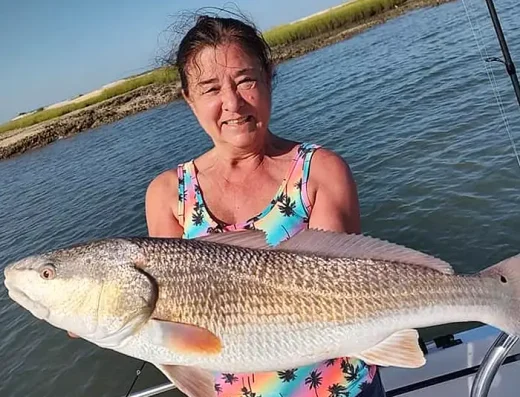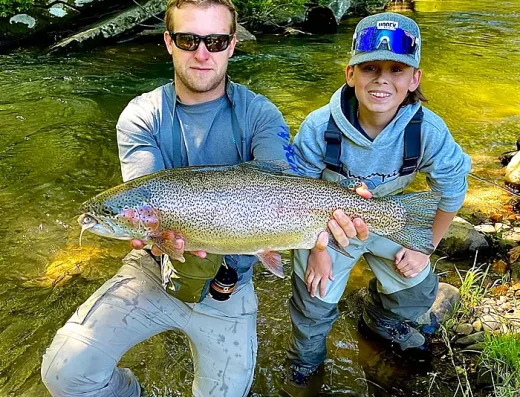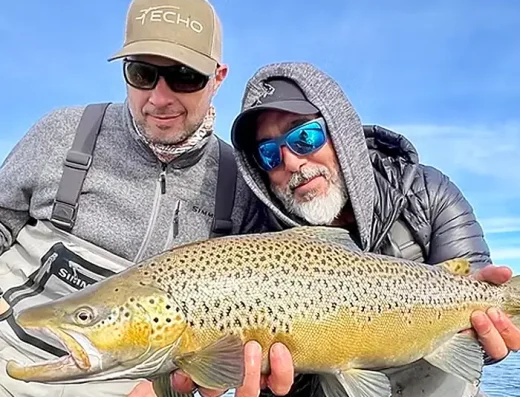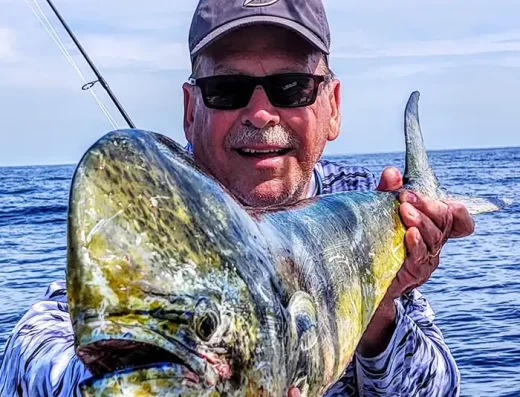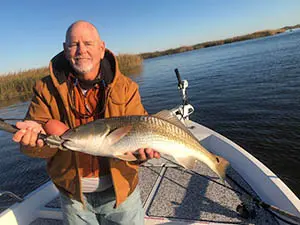Georgia Fishing Charters
Georgia fishing charters give anglers access to everything from redfish in the tidal creeks to stripers in deep mountain reservoirs and snapper runs offshore from the Golden Isles.
TrustedFish connects anglers with proven local captains in Georgia —no commissions, no pay-to-play listings, no BS. Every charter on our platform is invite-only, vetted for skill, local knowledge, and reputation. If they’re listed, they’ve earned it.
Top Rated Charters in Georgia
Cllick to View Destinations
Georgia Fishing Guide
Fishing in Georgia spreads across salt marshes, barrier islands, tidal rivers, and big reservoirs. The coast’s not long—just over 100 miles—but it’s packed with fishy water. Inshore charters around places like St. Simons, Jekyll Island, and Savannah focus on redfish, trout, black drum, and flounder. These are mostly half-day trips running short distances out of marinas like Thunderbolt, St. Marys, or Brunswick. You’ll be working popping corks with shrimp, or pitching live mullet around oyster beds and grass lines on a falling tide.
Offshore fishing from Georgia’s coast is a bit of a run—30 to 50 miles for the reefs—but it’s solid when the weather’s good. Full-day trips hit bottom structure for snapper, triggerfish, and grouper. Kingfish and cobia show up closer in during summer, and dolphin (mahi) are possible when the Gulf Stream pushes in tight. Some boats run trolling spreads, others drift with live bait over wrecks.
Head inland and you’ve got serious freshwater options. Lake Lanier and Lake Hartwell are famous for stripers and spotted bass. Guides here run center consoles with live bait tanks and downriggers, especially in summer when fish go deep. Farther south, Lake Seminole’s grass flats hold big largemouth, and Clarks Hill offers crappie and catfish action.
Most trips in Georgia are family-friendly, and a lot of charters provide everything: bait, rods, and licenses. Tide swings matter big on the coast, so start times often move around. Freshwater guides chase bite windows too—early morning for topwater bass, or cooler parts of the day when it’s blazing hot.
Regional Fishing Highlights
Savannah & Tybee Island
Redfish, seatrout, and flounder are the bread and butter here. Marsh drains and oyster rips are prime spots, especially on the outgoing tide. Charters launch from Coffee Bluff, Lazaretto Creek, or Thunderbolt. Fall brings big bull reds inside the sounds. Light tackle, jigheads, and shrimp get it done.
Golden Isles (St. Simons, Jekyll)
Plenty of inshore trips working fiddler crabs near pilings for sheepshead, or drifting live shrimp over shell bars. Offshore runs hit reefs like SNAP or HLHA for snapper, triggers, and kings. Tarpon show in summer near the beach fronts—best fished with live menhaden on circle hooks.
Lake Lanier & North Georgia
Live blueback herring fished on downlines or free-lines is the main striper tactic here. Early mornings see topwater blowups, especially in spring. You’ll also find spotted bass tight to brush piles or deep points. Trips usually launch from Balus Creek or Laurel Park.
Brunswick Offshore
Bottom fishing 40+ miles out targets snapper, grouper, and amberjack. Slow-pitch jigging’s growing popular here. Closer wrecks hold sea bass, triggers, and kings. Charters depart from St. Simons Marina or Blythe Island. Runs are long, so full days are the norm.
Lake Seminole & Flint River
Seminole’s hydrilla and stump fields hold big bass year-round. Topwater frogs and flipping baits are solid bets. Crappie stack up in creek channels in winter. The upper Flint River has shoal bass—best hit with small swimbaits or jigs in moving water.
Fishing Seasons in Georgia
Spring
Redfish start pushing into the shallows as the tides warm, and trout fire up on mudflats. Offshore, bottom fish like vermillion and black sea bass are dependable. Striper runs on the Chattahoochee and Coosa kick off hard—best fished with live bait near current breaks.
Summer
Hot, but productive. Tarpon migrate through the barrier islands, and inshore species feed best early or late. Offshore runs go deep for snapper and dolphin. Freshwater stripers push deep—guides troll or downline herring 30+ feet down. Bass hit topwaters at dawn, then drop into shade.
Fall
Prime time for inshore. Bull redfish school up near sandbars, and speckled trout bite gets hot on moving tides. Crappie school up on brush in the lakes, and bass put on weight before winter. Offshore trips still run when weather allows—kings and bottom fish are steady.
Winter
Tidewater redfish stay tight to the creeks—clear water sight-fishing is possible on sunny days. Freshwater action shifts to crappie and deep bass. Striper bites pick up in Lanier and Hartwell. Offshore runs are limited due to wind, but bottom fish are still there if you can get out.
Most Popular Gamefish in Georgia
- Redfish – 2–30 lbs. Caught in tidal creeks and sounds on shrimp, mullet, or artificial under popping corks.
- Spotted Seatrout – 1–5 lbs. Found near oyster bars and grass flats on moving tides.
- Tarpon – 50–150 lbs. Summer near beaches and inlets using live pogies or crabs.
- Striped Bass – 5–30 lbs. Fished in deep reservoirs with live herring on downlines
- Spotted Bass – 1–5 lbs. Caught around structure with jigs, shaky heads, or topwater.
- Largemouth Bass – 1–10 lbs. Found in lakes and rivers using frogs, crankbaits, and plastics.
- Sheepshead – 2–8 lbs. Around bridge pilings and rocks with fiddler crabs.
- Snapper (Vermilion & Red) – 2–20 lbs. Offshore reefs using squid, cut bait, or jigs.
- King Mackerel – 10–30 lbs. Trolled or live-lined off reefs and beach fronts.
Georgia Fishing FAQs
Do I need a fishing license for a Georgia charter?
No, saltwater and freshwater charters in Georgia typically cover licensing under their guide permit. Always double-check when booking.
What’s the best time of year to fish in Georgia?
Fall is hard to beat for inshore species like redfish and trout, but spring striper runs and summer tarpon are also top-tier.
Can we keep the fish we catch?
Most charters let you keep legal-sized fish, and they’ll usually clean them at the dock. Some species like red snapper have limited seasons.
What types of fishing charters are available near Savannah?
Inshore trips are most common—redfish, trout, flounder. Some boats offer longer runs to reefs when weather allows.
Are kids allowed on Georgia fishing trips?
Yes, most guides welcome families and can tailor trips for younger anglers with lighter tackle and calmer waters.
What gear should I bring on a Georgia freshwater charter?
The guide usually provides everything. Just bring sunscreen, snacks, and a jacket if it’s early or cold.
How long are typical fishing trips in Georgia?
Inshore and freshwater trips run 4–6 hours. Offshore trips are usually 8–10 hours due to long runs to the reef.
Where are the best places to fish in North Georgia?
Lake Lanier and Lake Hartwell for stripers and spots, and the Flint or Chattahoochee River for bass and shoalies.
Can you fish for tarpon in Georgia?
Yes, tarpon show up in summer along the coast, especially near Jekyll and Cumberland Islands. Timing and bait choice matter.

